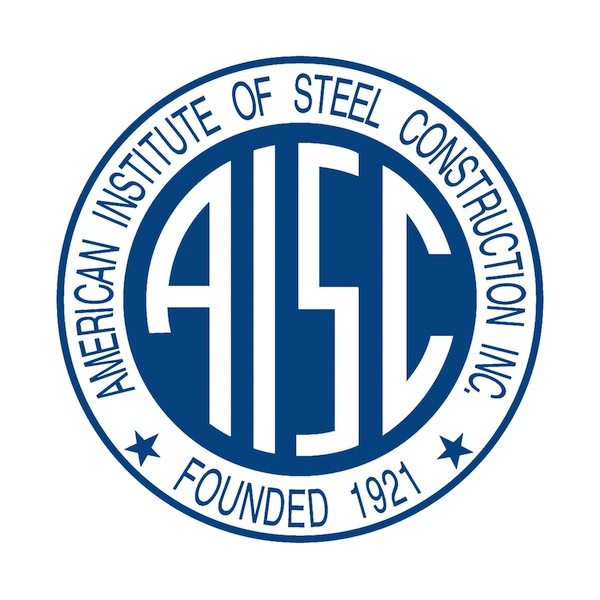The American Institute of Steel Construction (AISC), in conjunction with several of its structural steel industry partners, is offering $135,500 in scholastic aid for the 2013-2014 academic year. This year's variety of programs offers opportunities to more students than ever before. For full eligibility requirements and to submit an online application form, visit www.aisc.org/scholarships.
"AISC and its members understand the life-changing affects that a little assistance can have on the futures of college students. We are pleased to be able to offer students the opportunity to receive financial assistance through our Scholarship programs," commented Nancy Gavlin, AISC's director of education.
This year's scholarship programs include:
AISC David B. Ratterman Fast Start Scholarships
Award: $40,000 in awards total
Now in its second year, the AISC David B. Ratterman Fast Start Scholarships are for freshmen and sophomore students who either share a permanent residence or are the children of employees at AISC member companies including fabricators, service centers and producers. The program is designed to help students of hardworking employees of steel facilities who want to go to college.
Last year, one applicant, an honors student in need of financial assistance, wrote: "Both of my parents work for an AISC member. The construction field has suffered tremendously over the last few years. [ The company ] being an AISC member, I believe, has allowed my parents to keep working in this difficult time. The fact that [ the company ] is an AISC member, means that they work hard, follow procedures, maintain records and put out a high-quality product that they and their customers can be proud of."
New this year, the Fast Start Scholarships are open to students at two-year colleges in addition to four-year colleges.
AISC Steel Industry Scholarships:
• AISC Education Foundation Scholarships
Award: $65,000 in awards (Amounts vary from $2,000 - $5,000 per award.)
Juniors, seniors and master's degree students enrolled in civil, architectural or construction engineering or construction management programs at U.S. colleges and universities are eligible.
AISC/Industry Partner Scholarships:
Eligibility requirements vary for these scholarships. Visit www.aisc.org/scholarships for details.
• AISC/Associated Steel Erectors of Chicago
Award: 5 x $3,000
• AISC/Southern Association of Steel Fabricators
Award: 2 x $2,500
• AISC/Ohio Structural Steel Association
Award: 1 x $2,500
• AISC/Rocky Mountain Steel Construction Association
Award: 1 x $3,000
• AISC/Great Lakes Fabricators & Erectors Association
Award: 1 x $5,000
Applications will be accepted until May 1, 2013. For additional application requirements and to submit an online application form, visit www.aisc.org/scholarships. If you have any questions, please contact AISC's Maria Mnookin at 312.670.5418 or mnookin@aisc.org.
About the American Institute of Steel Construction
The American Institute of Steel Construction, headquartered in Chicago, is a not-for-profit technical institute and trade association established in 1921 to serve the structural steel design community and construction industry. AISC's mission is to make structural steel the material of choice by being the leader in structural steel-related technical and market-building activities, including: specification and code development, research, education, technical assistance, quality certification, standardization, and market development. AISC has a long tradition of service to the steel construction industry of providing timely and reliable information.
Related Stories
| Oct 4, 2022
In dire need of affordable housing, Aspen, Colo. will get a development that provides 277 affordable homes
A few miles from downtown Aspen, Colo., a development will provide 277 new affordable homes for an area experiencing a dire affordable housing crisis.
Green | Oct 3, 2022
California regulators move to ban gas heaters for existing buildings
California regulators voted unanimously recently on a series of measures that include a ban on the sale of natural gas-powered heating and hot water systems beginning in 2030.
| Oct 3, 2022
The College of the Holy Cross completes a $110 million performing arts center
In Worcester, Mass., a one-hour drive from Boston, the College of the Holy Cross has completed its $110 million Prior Performing Arts Center.
Resiliency | Sep 30, 2022
Designing buildings for wildfire defensibility
Wold Architects and Engineers' Senior Planner Ryan Downs, AIA, talks about how to make structures and communities more fire-resistant.
| Sep 30, 2022
Manley Spangler Smith Architects partners with PBK in strategic merger
Manley Spangler Smith Architects (MSSA), a Georgia-based, full-service architectural firm specializing in educational and municipal facilities, announced today a significant development aimed at increasing its capabilities, expertise, and suite of services.
| Sep 30, 2022
Lab-grown bricks offer potential low-carbon building material
A team of students at the University of Waterloo in Canada have developed a process to grow bricks using bacteria.
| Sep 29, 2022
FitzGerald establishes Denver office
The new location bolsters FitzGerald’s nationwide reach and capitalizes on local expertise and boots-on-the-ground to serve new and existing clients seeking to do business in Denver and the Front Range, as well as the Southwest United States, California, and Texas.
| Sep 28, 2022
New digital platform to foster construction supply chains free of forced labor
Design for Freedom by Grace Farms and the U.S. Coalition on Sustainability formed a partnership to advance shared goals regarding sustainable and ethical building material supply chains that are free of forced labor.
| Sep 27, 2022
New Buildings Institute released the Existing Building Decarbonization Code
New Buildings Institute (NBI) has released the Existing Building Decarbonization Code.
| Sep 23, 2022
High projected demand for new housing prompts debate on best climate-friendly materials
The number of people living in cities could increase to 80% of the total population by 2100. That could require more new construction between now and 2050 than all the construction done since the start of the industrial revolution.

















